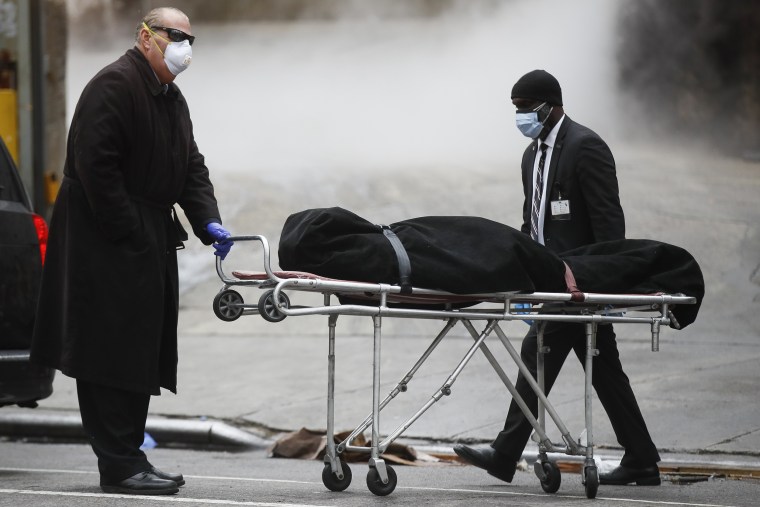The number of deaths from the coronavirus in the United States topped 100,000 on Wednesday, a bleak moment that arrived after months of stark public health measures upended the lives of millions of Americans and battered the country's economy.
The 100,000 milestone, which is based on NBC News' tally from state officials, comes as the number of deaths in the U.S. continues to rise, though possibly at a slower rate than previously.
While the number of fatalities increases, officials in states across the United States have begun kickstarting their economies in ways that are vastly different, and the White House has remained at odds with its own infectious disease experts over how swiftly that process should play out.
On Sunday, President Donald Trump tweeted that “cases, numbers and deaths” were falling across the country. The statement echoed an assertion he made earlier this month that was contradicted at the time by the White House’s own pandemic task force, according to an internal White House report obtained by NBC News.
According to the document, the number of infections in metropolitan areas — from Tennessee and Kentucky to Texas and Iowa — were surging by 72 percent or more. The number of new infections in Charlotte, North Carolina, grew by 200 percent. In Central City, Kentucky, it was 650 percent.
A man who died in Washington state Feb. 29 was initially described as the first death attributed to the virus. That date was later revised to nearly a month earlier, when public health officials in Northern California announced that tissue samples obtained from a person who died Feb. 6 tested positive for the coronavirus.
Dr. Sara Cody, the public health officer in Santa Clara County, said the 57-year-old woman died at home. Her death, along with a previously unexplained Feb. 16 fatality, represented “iceberg tips,” she said, according to the Los Angeles Times.
“None of these cases had a significant travel history,” Cody said. “We presume that each of them represent community transmission and that there was some significant level of virus circulating in our community in early February … and who knows how much earlier.”
For weeks, the virus’ epicenter in the United States was New York City. Hospitals were overwhelmed with patients who sometimes had to wait days for a bed. One doctor called it “a war.” Another died by suicide. Her sister said the virus “broke” her.
Nearly 30,000 people have died from the virus in New York state, with most of them in the city’s five boroughs, according to a tally by NBC News. Data from the Johns Hopkins Coronavirus Resource Center show that the number of cases in much of the city is still rising, though at a far slower pace than a month ago.
But in other regions, the numbers have continued to surge. In Mecklenberg County, North Carolina, where Charlotte is located, cases nearly doubled between May 1 and Saturday. More than 3,000 cases were recorded in the county of roughly 1 million people. Seventy-three people have died, according to Johns Hopkins.
In Montgomery County, Alabama, another area highlighted in the task force report, the number of cases nearly tripled between May 1 and Saturday, jumping from 355 to 1,100, according to Johns Hopkins. Montgomery Mayor Steven Reed said last week that the city’s hospitals were so overwhelmed with coronavirus cases that they were diverting patients with acute health issues to Birmingham, 90 miles away.
“Right now, in Montgomery, we’re at a point where we can see the cliff, and we don’t want to get too close to it for fear of falling off,” Reed told MSNBC’s Rachel Maddow on Thursday. “We’re in a very dangerous predicament.”
